INTRODUCTION
Congress, in order to reduce the black market in illegal drugs, should begin taking incremental steps toward making drugs less of a criminal justice responsibility and more of a public health responsibility.1
--Former Baltimore Mayor Kurt L. Schmoke
Has the time arrived for the incremental steps that Mayor Schmoke envisioned more than 30 years ago? One does not need to look any further than marijuana, which has been a tightly controlled substance in the U.S. for more than 85 years but is rapidly gaining acceptance as a medical product and a permissible intoxicant.2,3 It is likely that many pharmacists are supportive of this regulatory movement and may even have “experimented” with this Schedule I drug while in school. But what about something like cocaine? “That won’t happen,” you say? Then you should be aware that Oregon passed a law in 2020 that reduced the penalty for the unauthorized possession of less than two grams of cocaine to the payment of a small fine.4
Other states, municipalities, and countries have also begun taking steps towards loosening or eliminating penalties for prohibited recreational substances, in some cases including other drugs currently listed in Schedule I of the Controlled Substances Act (CSA). Is this the start of a new national trend leading to a relaxation of restrictions on previously controlled substance and perhaps even to someday permit retail sales? Will the future of drug control start to look more like the 1890s than the 1990s?
This continuing education activity will review national and international regulation of controlled substances and some changes that governments are enacting or considering to loosen their control. Do these events indicate that society’s view of controlled substances and use disorders—and pharmacy’s role—are evolving?
Pause and Ponder: Will biennial controlled substance inventories and the familiar red “C” go the way of manual typewriters and become relics of a bygone era?
REGULATION OF CONTROLLED SUBSTANCES
Historical Perspective
In the 19th Century, what we now call controlled substances were readily available in retail locations. In the 1890s, the Sears and Roebuck catalog (that’s the 19th Century Amazon for our younger readers) offered a syringe and a small amount of cocaine for purchase for $1.505 (equivalent to about $50 today). Individuals could also order the tonic, Wine of Coca, a mixture of coca-leaf extract and Bordeaux wine, which was promoted as “a genuine rich wine ... well known throughout Europe for its strengthening and nourishing qualities” at retail for 95 cents.5 In addition to cocaine, consumers could also openly purchase morphine and heroin from catalogs, apothecaries, and physicians. 5
The popularity of cocaine-infused beverages, tonics, and powders grew in the late 1800s, and were generally held to have therapeutic value for a variety of conditions, including headache and fatigue, constipation, nausea, asthma, and impotence.6 Most pharmacy personnel are probably aware that a pharmacist in Atlanta, John Pemberton, took advantage of prohibition being enacted in parts of Georgia and replaced the wine in Wine of Coca with a sugary syrup and added a kola-nut extract containing caffeine in 1886.7 He named the concoction Coca-Cola and described it as a temperance drink.7
Although frequently denied by the company, Coca-Cola contained a small amount of cocaine (and likely the precursor, ecgonine) and became one of the world’s most popular tonic/beverage sold at retail, often at pharmacy soda fountains.6,8 Early in the 20th Century, public opinion about cocaine began to turn negative and the company (by then owned by another pharmacist, Asa Candler), tried to remove cocaine from the beverage but it would not become completely cocaine-free until 1929 when newer extraction methods were developed.6
Recently, the well-known billionaire, Elon Musk, jokingly(?) tweeted “Next I’m buying Coca-Cola to put the cocaine back in.”8 Current legislative changes discussed below suggest that this notion is not so far-fetched.
During the early part of the 20th Century, there were no federal agencies that regulated medical and pharmacy practice, and physicians could freely prescribe cocaine and morphine as treatment for pain.9 Drug abuse became increasingly common and emerged as a significant social and public health issue, and a less permissive attitude towards drugs began to take hold.9
The first federal law to ban the non-medical use of a substance was the Smoking Opium Exclusion Act in 1909; it prohibited the possession, importation, and use of opium for smoking, although it could continue to be used medically.10 A more significant step was the passage of the Harrison Narcotic Tax Act in 1914 which regulated “narcotics” (defined as opiates and cocaine) by imposing a special tax upon anyone who produced, imported, manufactured, sold, dispensed, distributed, or compounded these substances.11 Note that the act was an economic regulation to comply with treaty obligations and did not directly prohibit the use nor sale of opiates and cocaine.1
The Harrison Act required physicians and pharmacists who prescribed or dispensed “narcotics” to be registered and pay a fee of $1 to $24 per year11,12 (equivalent to $29 to $700 today). The act mandated special order forms and record keeping whenever narcotic drugs were sold. They could only be provided from packages bearing a government stamp.12
By using the federal government’s taxing power to restrict the use of opiates to professional practices, the Harrison Act effectively created the first class of prescription drugs.11 (The Food Drug and Cosmetic Act in 1938 formally established prescription-only drugs and the 1951 Durham-Humphrey Act [sponsored by two pharmacist-legislators] gave the U.S. Food and Drug Administration (FDA) authority to designate which drugs would require prescriptions.13)
After 1919, oversight by the Treasury Department expanded to define the scope of professional practice.11 Previously, physicians interpreted terms in the act such as “legitimate medical purposes,” “professional practice,” and “prescribed in good faith” to mean that they could provide narcotics to ease the suffering of withdrawal in addicts who were regarded as having a disease.12 However, the Treasury Department interpreted the Harrison Act to mean that any prescription for an addict for the purpose of relieving the trauma of addiction was illegal, and the Courts supported this position.12 Consequently, the only source available for an addict to obtain narcotics was through illegal means.12
The law also established the first federal narcotics agents, although their enforcement powers were limited. The Federal Bureau of Narcotics (FBN) was established in 1930 and was given the authority to enforce the Harrison Act and other anti-drug laws and later also oversaw the Marijuana Tax Act (see below).14 President Herbert Hoover appointed Harry J. Anslinger to be Commissioner of Narcotics, a position he would hold under four U.S. presidents for more than three decades. He became the face of the government’s hardline approach to eradicate drug abuse.14
Later, the 18th Amendment of the Constitution and the Volstead Act banned the manufacture, transportation, or sale of alcohol in 1919.10,15 (By this time, many states had already banned the sale of alcohol.) Prohibition was overturned by the 21st Amendment in 1933.
By 1930, 30 states had also prohibited the use of marijuana, beginning with California in 1913 and Utah in 1914.16 (Ironically, California became the first state to approve the medical use of marijuana 83 years later.) In 1937, Congress passed the Marihuana Tax Act which was modeled after the Harrison Act.55 The law didn’t specifically criminalize the use or possession of marijuana, but it required practitioners register and pay a tax, and imposed a fine of up to $2000 (about $40,000 today) and five years in prison for non-payment.10,17 There is a widely held feeling that the push for stricter control of marijuana was fueled by non-health concerns. Those concerns included
- commercial interests
- anti-immigrant and racial bias
- exaggerated fear about violence and crime
- hysteria about the drug’s alleged contribution to moral decay, and
- pressure from the Federal Bureau of Narcotics
All of these factors played major roles in the push for stricter control of marijuana.17,18 Such feelings persist today and are part of the effort towards deregulation. The Act was ruled unconstitutional in 1969 in a suit brought by Harvard psychology professor and psychedelic guru, Timothy Leary.19
Today, drugs subject to abuse are regulated by the Controlled Substances Act (CSA), signed into law by then-President Richard Nixon in 1970, which, among other things, established the now-familiar five schedules. This will be discussed further below.
REGULATION OF RECREATIONAL DRUGS – INTERNATIONAL
The United States is a party to three United Nations (U.N.) drug control treaties20:
- the 1961 Single Convention on Narcotic Drugs
- the 1971 Convention on Psychotropic Substances, and
- the 1988 Convention Against Illicit Traffic in Narcotic Drugs and Psychotropic Substances.
These are designed to establish effective control over international and domestic trafficking in opiates, coca leaf, cocaine, marijuana, stimulants, depressants, and hallucinogens by limiting the international production and trade of psychotropic substances and their chemical precursors.9,20 The treaties also establish international mechanisms to monitor treaty adherence.20 More than 95% of U.N. Member States are participants in these international treaties.20 Under the CSA, treaty obligations may require the U.S. Attorney General to control or reschedule a substance if existing limits in the U.S. are less stringent than those required by a treaty.9
Despite these international agreements, more than two dozen countries have moved toward some form of decriminalization of recreational drugs.21 The SIDEBAR differentiates decriminalization and legalization.
SIDEBAR: Decriminalization and Legalization
Decriminalization is not the same as legalization.
When a drug is legalized, it may be restricted but there is no punishment for possession or use. Typically, regulations may exist regarding where and how the legal drug can be produced, sold, and consumed. Criminal or civil penalties may apply if production, sale, or consumption take place outside of regulations (think alcohol).
When a drug is decriminalized, possession and use are still “illegal” but, there are no criminal penalties (e.g., incarceration) for use or possession. Instead, there may be civil penalties (e.g., fines, or mandated treatment or educational programs), and usually, possession limits. In addition, use or possession do not lead to a criminal record that might affect employment, housing, or travel opportunities if a substance is decriminalized. Selling or manufacturing drugs would normally still carry criminal penalties.22
Most people will bring up the Dutch city of Amsterdam when discussing lax drug policies. Indeed, people 18 years of age or older can purchase marijuana and other “soft” drugs (magic mushrooms, Salvia, Peyote cactus) legally and openly in coffee shops and other establishments in The Netherlands. .23 Smoking tobacco products are also tolerated in public places except near schools or playgrounds.
Dutch drug policy rests on two principles.23 (Note that Dutch policy applies nation-wide, but most people think of Amsterdam when this topic arises.) One is the fundamental belief that all human beings may decide about matters relating to their own health and includes acceptance of euthanasia for terminally ill patients. The other is that concealing socially negative phenomena does not cause those practices to disappear and instead makes them far more difficult to influence and control.
The Dutch divide drugs into two groups, soft and hard drugs, based on their human health impact. Hard drugs such as cocaine, LSD, morphine, and heroin are forbidden in the Netherlands. Soft drugs are tolerated but strict laws limit quantities, conditions of sale, and use. For example, driving under the influence of a soft drug is treated similarly to driving under the influence of alcohol. Large scale growing, processing, and trading in marijuana is forbidden, but Dutch courts bestow milder penalties than in most other countries.23
Another frequently cited model is Portugal. On July 1, 2001, Portugal became the first country in the world to decriminalize all drugs, including methamphetamine and heroin, removing the distinction between soft and hard drugs.24,25 Possession is decriminalized for personal use within certain limits, depending on the drug.24 Generally, the limits are based on a hypothetical 10-day supply for an average individual.25 Drug use became an administratively sanctionable misdemeanor under the responsibility of the Ministry of Health, rather than involving law enforcement.25 The intent of the law was to focus police resources on those who profit from the drug trade, rather than their victims, while also providing a public health approach to drug users.24
Individuals caught possessing drugs for personal use in Portugal are sent to a commission composed of health experts and a legal expert.26 The commission evaluates the person’s drug use and, if necessary, will refer them to voluntary treatment. (While most treatment is voluntary, in some cases, the commission can choose to issue a fine or mandate some form of therapy.) Additionally, the country expanded access to treatment and harm reduction services like needle exchanges.26
However, selling drugs is still illegal. Portuguese law considers it a crime if someone produces, buys, or transports an illicit drug that is above the legal amount for personal use.24 For example, possession of more than 5 grams of hashish could potentially lead to arrest and prosecution for drug trafficking. A conviction for drug trafficking in Portugal can be subject to between one and five years in prison.24
Beginning January 31, 2023, drug users 18 years of age and older in British Columbia, Canada who possess up to 2.5 grams of illegal drugs for personal use will not be arrested, charged, nor have their drugs confiscated.27 Drugs include heroin, fentanyl, cocaine, methamphetamine, and 3,4-methylenedioxymethamphetamine (MDMA or Ecstasy). While those substances will remain illegal, police will offer users information on available health and social services. The province said it asked for the change in its request to the Canadian government for the drug laws exemption in order "to remove the shame that often prevents people from reaching out for life-saving help."27
Canada’s intent is to use the province as a potential model for similar changes elsewhere in the country as part of a multi-faceted health-based strategy to end Canada’s drug overdose crisis, which reached record highs during the COVID-19 pandemic. The program has some exemptions; it will not apply to drug use on primary and secondary school grounds, child-care facilities, airports, or to members of Canada's military. The pilot program is set to run until January 31, 2026.27
On the other hand, some countries have very harsh drug laws. In Malaysia, you can be fined, jailed, or deported for having drugs in your possession and those who sell drugs can be punished with death.28 Execution is also the penalty for some drug crimes in China, Vietnam, and The Philippines. In Dubai, you can be imprisoned for possession of many prescription drugs that are legal in other parts of the world and failing a drug test can be grounds for incarceration even if the individual is not in possession of any drugs.28 In Russia, even Americans in possession of vape cartridges containing hashish oil can be subject to arrest and detention, as WNBA star Brittney Griner discovered.29
U.S. RECREATIONAL DRUG REGULATION
Controlled Substances Act
As noted above, in the early 1900s, drugs could be purchased at retail outlets with few, if any, limitations. Strong restrictions emerged later in the 20th Century. In the 1960s, attention was being paid to a medical approach to preventing and treating drug abuse along with a powerful emphasis on law enforcement.9 By 1969, newly elected President Richard Nixon made reducing drug abuse, especially heroin abuse, one of his top priorities.9 Nixon feared that drugs were undermining the integrity of America’s youth and was convinced that abuse and addiction gave rise to crime, the biggest issue in his 1968 campaign.30 Nixon sensed a need to restore control to a broken system and declared a “war on drugs.” Dismissing the current laws as “inadequate and outdated,” he called for a single, modern law to confine drug use to legitimate medical purposes.30
One weapon in the war was the enactment of the CSA.9 The CSA was part (Title II) of an omnibus bill (a proposed law covering a number of diverse or unrelated topics) called the Comprehensive Drug Abuse Prevention and Control Act of 1970. The new legislation offered a more systematic approach to regulation of abused drugs and provided additional law enforcement resources.9
Congress, in enacting the CSA, dealt with two competing interests related to drug regulation.31 They recognized that while improper use of controlled substances can be detrimental to Americans' health and general welfare, many of these substances have a useful and legitimate medical purpose and are necessary to maintain health and well-being. The Act simultaneously aims to protect the public from the dangers of controlled substances while also ensuring access for legitimate purposes.31 To achieve both goals, the statute created two complementary legal schemes. One provision required individuals and entities working with controlled substances to register with the government, report certain information to regulators, and have a responsibility to prevent diversion and misuse of controlled substances.31 The act also contained provisions to prevent trafficking in controlled substances by establishing penalties for the production, distribution, and possession of controlled substances outside the legitimate scope of the registration structure.31 CSA policies that were intended to curtail illegitimate use of these drugs included prescription refill limitations, security standards, recordkeeping requirements, order forms, production quotas, and the registration of importers and exporters of controlled substances.11,30 The new law was, however, not exclusively punitive; it eliminated mandatory minimum sentences for drug crimes.30
Moreover, Title I of the comprehensive act had more of a public health focus.30 It provided authority and funding to permit the Department of Health, Education, and Welfare to deliver prevention and treatment efforts through community mental health centers and public health service hospitals. It authorized the National Institute of Mental Health to increase substance abuse research and training.30 It also protected subjects’ privacy rights under the care of approved researchers.
Over the next few decades, public concern over drug abuse increased and Congress responded by enacting policies that created a harsher system of drug control and served as a basis of the ensuing “War on Drugs.” 30 Congress repeatedly amended the law to address the heightened concern, and it became more punitive and criminally focused and less directed towards rehabilitation and improved treatment.30
A new Federal Agency, the Drug Enforcement Administration (DEA), was created in 1973 to enforce the new law. This was done in part to coordinate federal and state enforcement activities and to reduce inter-agency rivalries.9,30 After the CSA was enacted, there were nearly 500,000 importers, exporters, manufacturers, distributors, and practitioners covered by the law, making the DEA the largest administrative agency in the U.S.11
Scheduling
The centerpiece of the CSA, as pharmacists are aware, was the creation of a scheduling system that provided a means for assigning regulated substances into one of five categories based upon the drug’s medical risks, therapeutic use, and potential for abuse and dependence.9,31 The classification system also establishes the obligations and penalties of the law.31 The most restrictive category is Schedule I which is comprised of drugs with high potential for abuse, but no accepted medical use.32 The placement of a drug in a schedule is fluid, and drugs can be moved to a different schedule, either up or down, added to the controlled substances list, or deleted.30 Any individual, not just regulatory officials or health care providers, can request that the DEA add, remove, or change a drug’s scheduling.9
In determining into which schedule a drug or other substance should be placed, or whether a substance should be re-scheduled or decontrolled, certain factors must be considered. The DEA is required to seek a scientific and medical evaluation of the substance from the Department of Health and Human Services to apply what is known as the eight-factor test when determining scheduling.32 These factors are
(1) Its actual or relative potential for abuse
(2) Scientific evidence of its pharmacological effect, if known
(3) The state of current scientific knowledge regarding the drug or other substance
(4) Its history and current pattern of abuse
(5) The scope, duration, and significance of abuse
(6) What, if any, risk there is to the public health
(7) Its psychic or physiological dependence liability
(8) Whether the substance is an immediate precursor of a substance already controlled
These criteria help to stratify the seriousness of the public health concern among the controlled substances. Will new regulatory strategies remove these distinctions?
PAUSE AND PONDER: Do the “C” schedules serve a purpose?
DECRIMINALIZATION – STATE AND LOCAL ACTIONS
While the general trend at the federal level for the past five decades has been a toughening of the restrictions on abused drugs, especially opioids, one exception is marijuana. States have led the way by actively relaxing restrictions on marijuana, first by legalizing medical use and later permitting limited non-medical use.
The medical use of marijuana has been legalized in 37 states plus the District of Columbia (D.C.), Puerto Rico, Guam, the Northern Mariana Islands, and the U.S. Virgin Islands.33 The medical marijuana movement began in California in 1996, but it wasn’t until 2012 that Colorado and Washington became the first two states to decriminalize the non-medical use of marijuana (for people 21 years of age or older).33 (California voters had rejected a proposition in 2010.) In the 2022 election, two additional states, Maryland and Missouri, approved the recreational use of marijuana. bringing the total up to 21 (plus D.C.) although similar proposals were rejected in Arkansas, North Dakota, and South Dakota.33
Beyond Marijuana
More recently, states and municipalities have gone beyond marijuana and have decriminalized other controlled substances. In May 2019, Denver, Colorado became the first governmental entity in the U.S. to decriminalize a (non-Cannabis) Schedule I drug, the psychedelic ingredient from mushrooms, psilocybin.34 The proposal was placed on the municipal ballot after garnering almost 9500 petition signatures and was supported by 50.5% of voters in the election.34 Denver was also the first major U.S. city to legalize the possession of small amounts of marijuana in 2005.34
The new ordinance states that the “enforcement of any laws imposing criminal penalties for the personal use and personal possession of psilocybin mushrooms... shall be the lowest law enforcement priority in the City and County of Denver.” It mandates that “no department... shall use any city funds or resources to assist in the enforcement of laws imposing criminal penalties for the personal use and personal possession of psilocybin mushrooms by adults.”35 Adult is defined as an individual 21 years of age or older.
One advocacy group (Decriminalize Denver) noted its support for the ordinance by stating that “Humans have used these mushrooms for thousands of years for healing, rites of passage, spiritual insight, strengthening community, and raising consciousness.” Decriminalize Denver has argued that “One arrest is too many for something with such low and manageable risks for most people, relative to its potential benefits.”34 In contrast, opponents have warned that “Denver is quickly becoming the illicit drug capital of the world” and that the long-term health effects of these drugs are unknown.34
Other municipalities have followed the same path as Denver. Oakland and Santa Cruz, California also decriminalized psilocybin in 2019 and 2020, respectively. In both cases, their respective City Councils took the action rather than mounting a referendum.36,37 The Santa Cruz ordinance is very similar to what was enacted in Denver preventing resources from being used to investigate and arrest people 21 years of age and older solely for the personal use and possession of “entheogenic plants and fungi”37 (a psychoactive, hallucinogenic substance or preparation especially when derived from plants or fungi and used in religious, spiritual, or ritualistic contexts38). Community testimony from people sharing mental health struggles and treatment likely contributed to the Council’s decision. Santa Cruz later extended its policy and banned enforcement actions against individuals using peyote and other mescaline-containing cacti. Oakland also decriminalized mescaline cacti, ayahuasca and ibogaine.39 The City Council in Ann Arbor, Michigan also unanimously approved mushroom decriminalization in 2020.40
Voters in Washington D.C. also approved similar measures in 2020, termed the Entheogenic Plant and Fungus Policy Act, which would decriminalize natural psychedelics including magic mushrooms, ayahuasca, and mescaline, and makes arrests for their possession or use the lowest priority for DC police. Due to D.C.’s unique status, implementation of the act was delayed for Congressional review and approval. D.C. received approval in 2021 but not before one member of Congress threatened to derail the process.41
In late 2021, Seattle became the largest city (to date) to decriminalize Schedule I psychedelic drugs.39,42 The City Council unanimously passed a resolution that “the investigation, arrest, and prosecution of anyone engaging in entheogen-related activities should be among The City of Seattle’s lowest enforcement priorities.” Its City Council asked the city’s police department to codify that practice as departmental policy.39 The resolution was limited to natural substances, notably psilocybin and ayahuasca, and later peyote; it excluded synthetic materials such as LSD.39,42 In support of its approval, the resolution noted both the therapeutic potential of psychedelics and protection of indigenous peoples who use these compounds for cultural and spiritual practices.42 More than 100 additional cities are moving to decriminalize psychedelic mushrooms.43
States are also supporting decriminalization measures and Oregon is at the forefront of these activities. In the 2020 election, voters in the state passed two companion referenda that significantly changed the state’s drug policy. Measure 109 approved the use of a psychedelic mushroom for medical use by authorizing the Oregon Health Authority to create a program to permit licensed service providers to administer psilocybin-producing mushroom and fungi products to individuals 21 years of age or older.44 The new law will allow anyone age 21 or older who passes a screening procedure to access the services for “personal development."45 A client does not need to be diagnosed with or have any particular medical condition to receive psilocybin. Clients would complete a preparatory session and then attend a session at a psilocybin service center where they would receive and consume the psilocybin product under the supervision of the service facilitator.44
Unlike the cities that decriminalized psychedelic drugs for personal use, the Oregon measure took a medical approach with the purpose of improving the physical, mental, and social well-being of people in the state and reducing the prevalence of mental illness conditions among adults who have not been helped by more mainstream therapies.44,46 The measure restricts psilocybin sales to licensed service providers and does not permit sales directly to users. Individual counties can opt out of the program.46
In the 2022 election, Colorado became the second state to approve psychedelics.47 The proposition legalizes regulated access to natural medicines for people 21 years of age or older, including plants or fungi that impact an individual's mental health and provides civil and criminal immunity for providers and users.47
Pharmacy staff should note that there is a growing interest in the potential therapeutic applications of psychedelic drugs to help many psychiatric disorders and these may become FDA-approved pharmaceutical products.48
While several municipalities and states have authorized the decriminalization of mushrooms and other psychedelics and justified their actions due to their healing and spiritual value, there have been other movements to expand decriminalization beyond those with potential medical benefits.
In the same election that decriminalized mushrooms, voters in Oregon approved another measure (110) to become the first state to lighten penalties for possession of both large and small amounts of a wide assortment of scheduled substances.4
Under the new law, the penalty for possession of larger amounts of controlled substances was reduced from a felony offense to a Class A misdemeanor punishable by up to 364 days of imprisonment and a fine of up to $6,250. For possession of smaller amounts of controlled substances, the measure reduced the penalty from a criminal misdemeanor to a new, Class E violation, which is punishable by a $100 fine. In lieu of a fine, a person charged with a violation may instead complete a health assessment at an Addiction Recovery Center.4
The threshold differentiating large from small amount are defined for different substances. For cocaine, the Class E violation applies to unauthorized possession of less than two grams. For oxycodone, it is unauthorized possession of fewer than 40 pills, tablets, or capsules. Someone in possession of less than 1 gram heroin would be subject to the new Class E penalty.4 The new measure also removes penalty enhancements for possession of small amounts of controlled substances where the individual previously had a felony conviction or multiple previous convictions for possession.4,45
The new program is loosely based on Portugal’s model, described above, but was modified in accordance with recommendations from Oregon’s recovery community.26 Oregon’s approach will focus on diversion and harm reduction for people who use drugs while retaining punitive approaches for drug trafficking. A goal of the new program is to improve Oregon’s ranking as one of the worst states at providing treatment for addiction.26 In 2016 and 2017, Oregon ranked first in the country for analgesic drug misuse, second in the U.S. for methamphetamine misuse, and fourth for cocaine and alcohol misuse while ranking 48th in access to treatment.26 In all, almost 10% of the state’s population had a substance use disorder.
The state is expanding its addiction recovery centers and anyone will be able to access them whether or not they have received a citation.26 The funding for expanded services will come from a higher than anticipated yield from marijuana taxes, which has exceeded $100 million per year.26
Oregon’s program has produced mixed results. In the first year after decriminalization took place, police issued approximately 2000 citations, but, despite the waiver of the fine if a person calls the hotline for a health assessment and counseling, only 92 of those ticketed called the hotline and only 19 of them requested resources for services.50 Almost half of people receiving a citation failed to make a court appearance. State health officials reported 473 opioid overdose deaths in the first 8 months of 2021, surpassing the total for all of 2020, and nearly 200 deaths more than the state saw in 2019.50 The state also reported that visits to emergency rooms and urgent care centers for opioid overdose have been increasing. The Oregon Health Authority cites an upturn in fentanyl abuse and a pandemic-related downturn in reporting in 2020 as possible reasons for the disappointing results. In addition, Oregon’s inpatient facilities, detox clinics and recovery-focused nonprofits were adversely affected by issues related to COVID-19 including workforce shortages; there is uncertainty whether providers can adequately expand to meet increased needs.51
Pause and Ponder: Is there a role for pharmacists in improving outcomes?
However, it has also been suggested that the more lenient rules take away the threat of jail time that some individuals need to encourage them to get into recovery while fewer low-level offenders will be forced into court-ordered behavioral health services.51 Portugal takes a more robust approach than Oregon, having “dissuasion commissions” that pressure anyone caught using drugs, including marijuana, to seek treatment. Tools include fines, prohibiting drug users from visiting certain venues or from traveling abroad, seizure of personal property, community work, and having to periodically report to health services or other facilities.50
California, Maine, and New Jersey, among others, have also been considering enacting decriminalization measures.52,53 A bill pending approval in California would decriminalize most psychedelics. The bill would allow people aged 21 and older to possess psilocybin, DMT, ibogaine, mescaline, LSD, and MDMA for personal use and “social sharing.”52 The bill advanced to the final step of Assembly approval when the sponsor removed ketamine from the list of substances due to concerns over date rape. The bill prohibits sharing drugs with anyone under 21 years of age or possessing them on school grounds. It would also allow personal cultivation of mushrooms. Proponents touted the benefits to individuals who would be aided by the use of psychedelics to treat trauma including military veterans. Opponents argued that social sharing could result in more overdoses from contaminated products and give drug dealers a built-in defense.52
PROS AND CONS
Why have states and municipalities chosen to decriminalize drugs? Although a detailed discussion of the benefits and detriments of lax drug policies is beyond the scope of this activity, it is worth briefly examining some of the arguments that have driven the move towards decriminalization. Table 1 describes the pros and cons frequently used to support the various arguments.
Table 1. Pros and Cons re: Decriminalization of Recreational Drugs1,16,54,55,56,57
| Justifications for decriminalization |
Justifications for continuing prohibition of recreational drugs |
| · A sense that the “War on Drugs” is expensive, harmful to society, and not working
· The suggestion that a medical model will be more effective
· Decriminalization will reduce profits for drug traffickers
· More than half of people in prison have untreated substance use disorders and
o Imprisonment actually leads to increased illicit drug and medication misuse following a period of incarceration with a much higher risk of drug overdose upon release
o Relapse to drug use in someone with an untreated opioid use disorder can be fatal due to loss of opioid tolerance that may have occurred while the person was behind bars
o A criminal conviction or a record of imprisonment can significantly hamper a person’s employment prospects and other opportunities |
· Risk of endorsing or encouraging risky behaviors
· Decriminalization would drive down the cost of drugs, making them more accessible
· Few non-violent users are actually imprisoned
· A black market will still exist for users under the permitted statutory age
· The current treatment infrastructure is inadequate to accommodate the anticipated increased demand
· The threat of incarceration is an incentive to seek treatment
· If restrictions are abandoned, other social costs will increase |
As a proponent for decriminalization, Mayor Schmoke proposed that the abuse of drugs should be “dealt with as a moral and medical problem than as a criminal problem ... a problem for the surgeon general, not the attorney general.”1 The number of people incarcerated for drug-law violations in state and federal prisons in the United States increased 12-fold between 1980 and 2018. Yet there is no statistically significant relationship between state drug imprisonment rates and three markers of state drug problems: self-reported drug use, drug overdose deaths, and drug arrests.57
Pause and Ponder: Should recreational drugs be regulated like alcohol?
Many advocates recommend an approach similar to the policy in Portugal and treat illicit drug use the way most states regulate alcohol and marijuana, by making it legal for stores to sell such drugs to adults.57 In Portugal, which has led the way towards decriminalization, the use of cocaine among young adults (15-34) is 0.3% compared with 2.1% in the European Union (EU) countries.58 Amphetamine and MDMA use are also lower. The overall overdose death rate in Portugal is five times lower than in the EU (which has a lower rate than in the U.S.).58 HIV infection rates among IV drug users have also dropped.58
Where Will This Lead?
Are the localities decriminalizing recreational drug use an anomaly or do they represent the tip of the iceberg for liberalization of personal drug use? The movement could follow the path taken by marijuana.
States have pursued a pattern of first decriminalizing and/or allowing medical use of marijuana before finally proposing legalization.16,59 States used their experiences with the intermediate steps as a means to anticipate the expected effects of total legalization.16 The liberalized marijuana policies in medical marijuana states exposed the public to more open marijuana use and may have changed attitudes towards the drug, along with a sense that prohibition is too costly.59
Efforts are ongoing to legalize marijuana at the federal level. Congress is currently considering the Marijuana Opportunity Reinvestment and Expungement (MORE) Act. It would remove marijuana from the list of scheduled substances under the Controlled Substances Act and eliminate criminal penalties for an individual who manufactures, distributes, or possesses marijuana.3 It would also establish a process to expunge convictions and conduct sentencing review hearings for individuals previously convicted of federal cannabis offenses. It would establish and fund a grant program to provide resources to administer services for individuals adversely impacted by the War on Drugs, including job training, legal aid, reentry services, and health education programs and would levy a 5% tax on the sale of cannabis products.3
Will legalizing marijuana serve as a model for other C-I drugs to follow? Indeed, a bipartisan bill was recently introduced in the U.S. Senate calling on the DEA to reclassify breakthrough therapies such as psilocybin and 3,4-methylenedioxymethamphetamine (MDMA) as Schedule II drugs.60
SUMMARY AND CONCLUDING COMMENTS
The pendulum of drug control may be swinging closer to the more lenient approach that existed 100 years ago. In a decade, the U.S. moved from no state permitting recreational use of marijuana to almost half of the states doing so, along with decriminalization being debated at the federal level. Will additional recreational drugs follow the same path? Several municipalities and a few states have already made significant strides in that direction. In particular, Oregon and the nation of Portugal have established programs making controlled substances a medical and public health issue rather than a law enforcement issue, although with mixed results. Will the distinction between “hard” and “soft” drugs disappear in the U.S., as more states adopt measures aimed at decriminalizing drugs?
If so, there will be many questions about how pharmacy may be affected. Will drugs for which there is some evidence for medical applications like cannabinoids and psychedelics such as psylocibin, find their way to the pharmacy shelf? If Oregon’s medical model for psychedelics is followed by other states, will it enable new opportunities for pharmacists? Will cocaine and heroin once again be available as OTC products in pharmacies?
It is important for pharmacy staff to stay abreast of regulatory changes in their own states and nationally. They should become part of the conversation about the direction such regulations should take.
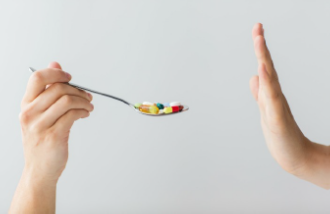


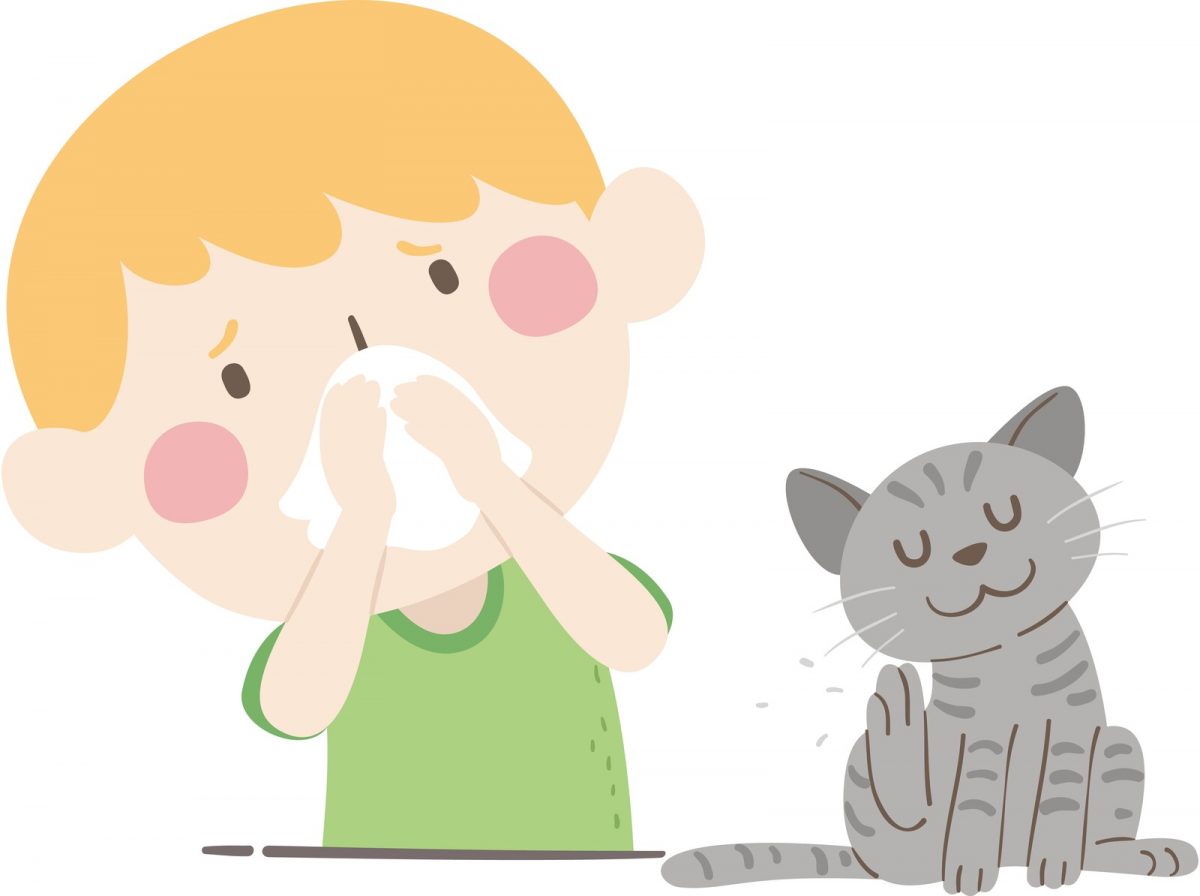

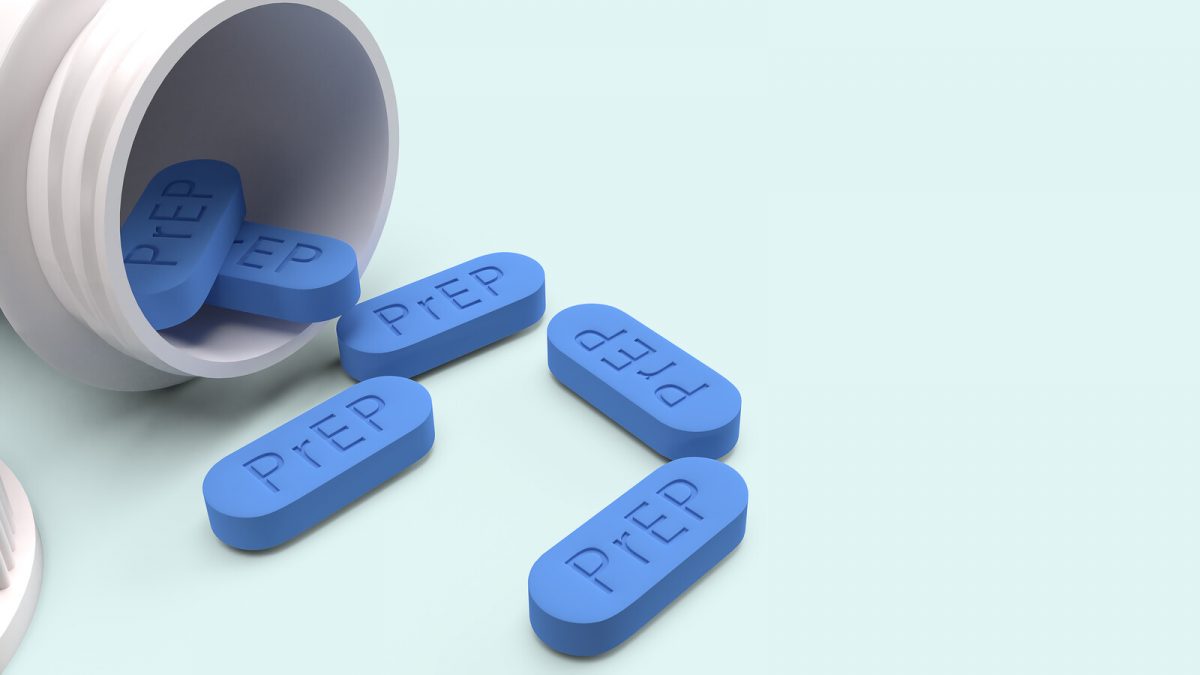
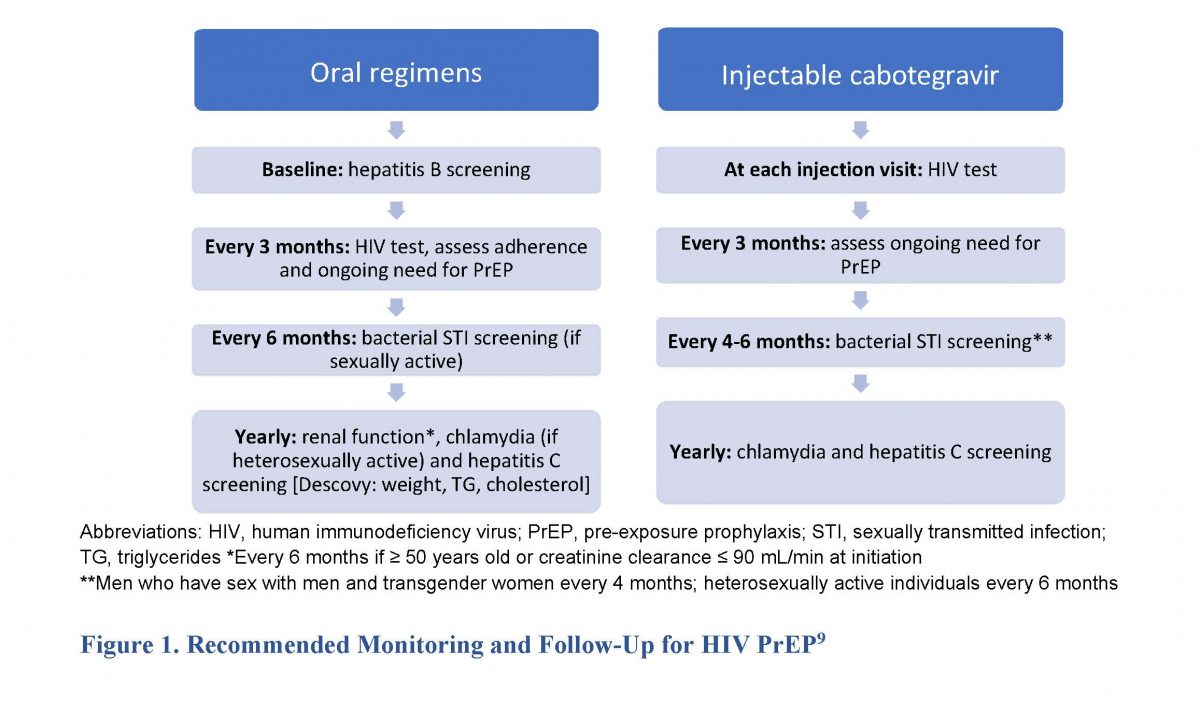



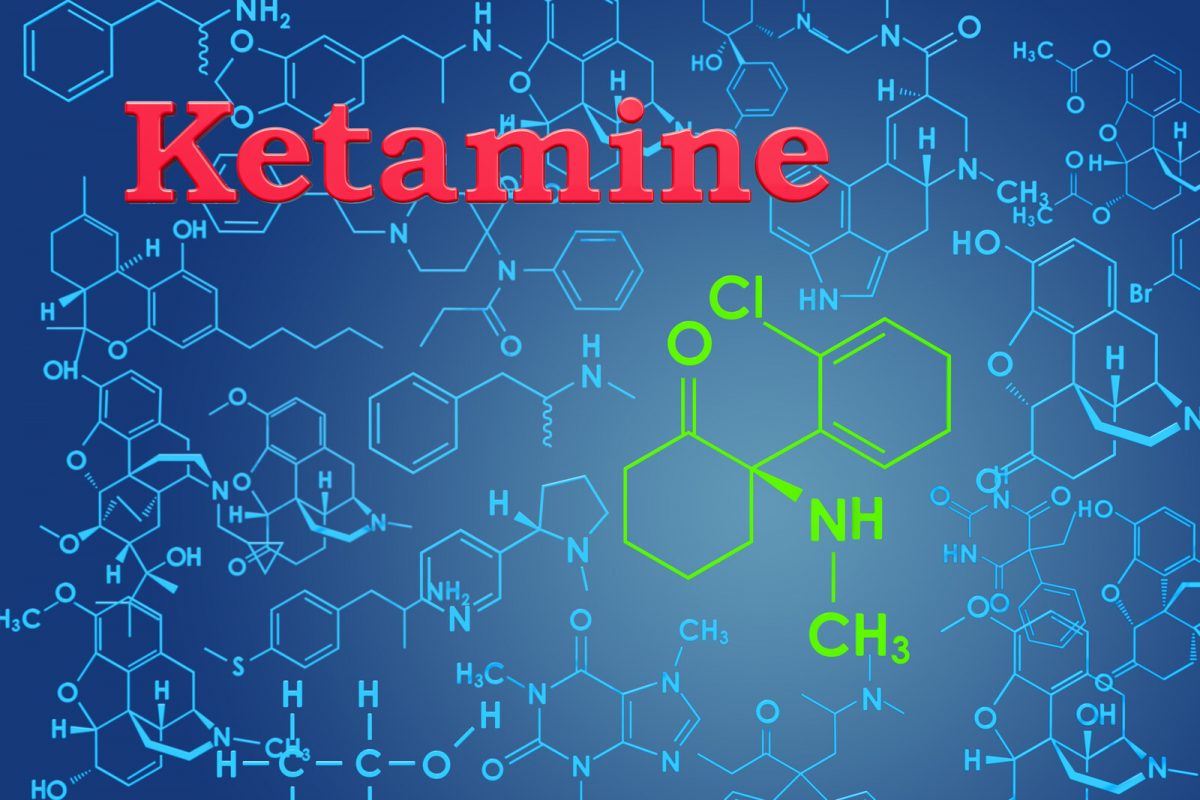

 “The University of Connecticut School of Pharmacy is accredited by the Accreditation Council for Pharmacy Education as a provider of continuing pharmacy education.”
“The University of Connecticut School of Pharmacy is accredited by the Accreditation Council for Pharmacy Education as a provider of continuing pharmacy education.”